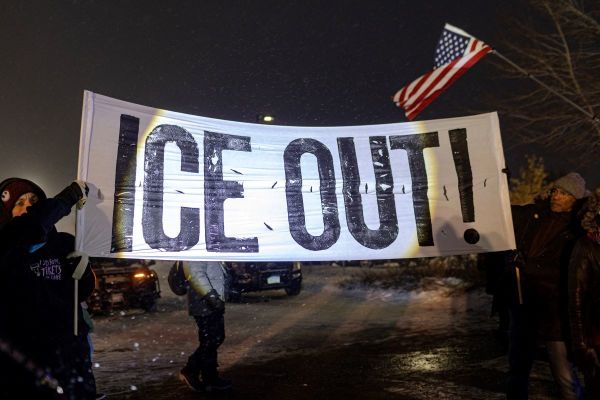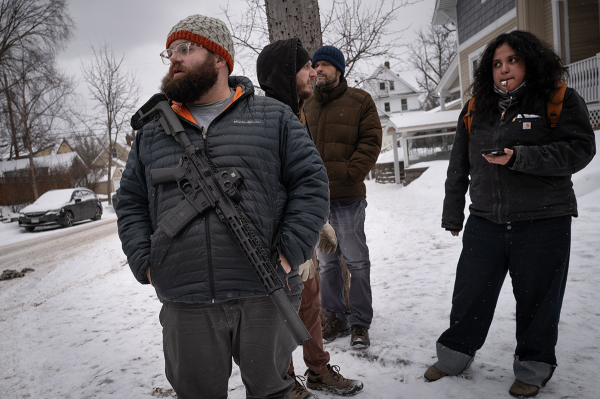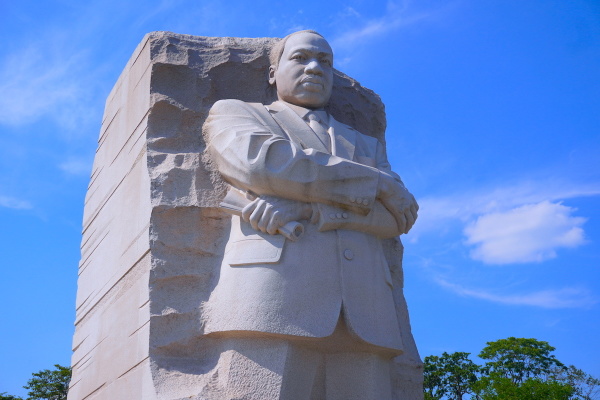The 40/60 COVID church is here to stay
I believe the 40/60 COVID church is here to stay.
What is the 40/60 COVID church?
It is the church that has been birthed out of the COVID season we just walked through. It means forty percent of your people will attend consistently in person and sixty percent of your people will attend the platforms of your online location.

We (Vanguard Church in Colorado Springs) started our online location four years ago before COVID was an issue. At the time, when we launched it, it was for the purpose of those who could not attend service with us locally but who wanted to stay connected with us after moving away.
We are a huge military town, and our city sees a roughly one-third turnover every three years.
For the past three or four years, our pastoral leadership team and elder board have been discussing how we should view the online community. Here were the three options we were considering: 1) an alternative to attending in person 2) an option when you can’t attend 3) a location like our other in person locations.
After a couple of years of debating it, about six months before COVID hit, we decided at our annual pastoral/elder retreat that we were going to move toward making our online community a location, not an option, and not an alternative when you can’t attend, but a legitimate location like our in-person locations.
What does this mean? It means we would work toward: 1) staffing with administrators and pastors 2) encourage people to attend the online location consistently 3) encourage our people to become virtual evangelist 4) grow people’s awareness of the need to give to the ministry through it 5) create a discipleship process 6) look for ways to care for those who attend 7) invite them to start life groups or join some type of ongoing connection group either virtually or in their particular area 8) provide our online attendees a way to connect with us and get the help they need.
After making these decisions, then COVID hit in March of 2020 and we went from in person and online services to online services only for months. COVID accelerated our process. Like many, we upgraded our online equipment and worked to make it a better experience online. Eventually we were able to go back to in-person services in June of 2020, but what we noticed after restarting our services is that many of our people did not return and still haven’t.
From June to December, we saw a steady participation of forty percent of our people coming to in-person services and sixty percent of our people still attending online. As we neared Christmas week, we hosted in-person Christmas Eve services. Our church averages about a thousand people in attendance. From June to December, we saw roughly four hundred people attend in person and six hundred people attend online on average. Our church has about three to four thousand people who consider Vanguard their church home and attend a minimum of a couple of times a year.
As we approached Christmas week, we didn’t know what to expect. We had sign-ups in advance to attend the service and eventually those sign-ups were at capacity, so we added another service. So, we knew that there would be a good sum of people in the building, but we didn’t know what to expect for our online viewership due to the increased in-person attendance.
Our Christmas week services increased our regular in-person attendance by about a hundred and fifty percent. And to our surprise, the increased in person did not impact our online attendance at all. When all was said and done, even though the numbers had more than doubled, we saw forty percent of our church attend in person and still sixty percent attend online.
Since Christmas this has continued in 2021. Regardless of what our weekend attendance average may be, the percentage breakdown of who attends in person and who attends online has remained 40/60.
We wonder now as a leadership, “Could it be that this is the new norm? And if it is the new norm, what does that mean for us as a church when it comes to budgeting, staffing, and ministry planning? What does it mean for our people and how we minister to them and build our weekend service experience?”
I am convinced, though there is still more data to be gathered, that this is the new norm. And if it is, how do we contextualize everything about our church to minister to those who are a part of the church?
We remain vigilant to continue to lean into the metrics of our weekend services, to look for ways to staff our online location, and to make sure we are providing a consistent experience to them along with personal touch points during the service and during the week.
I think all of us could get discouraged right now and remember the way it used to be. Or we can get innovative and look for ways to become more effective in virtual evangelism, discipleship, and helping our people mature spiritually. Gone are the days when everyone attends a church just down the street from where they physically live. People want to attend where they feel a part of the story, connected, growing, challenged, have shared memories, and are a part of the mission, vision, and passion of that particular church or ministry. We could sit around and debate the positives and the negatives of this emerging new church reality or we can get busy reaching people with the Gospel. With any new model there will be positives and negatives, but it seems to me the 40/60 church just may be here to stay long after COVID is over.
For us as a church, as we move forward this means that our online platforms will be getting as much attention and care as our in-person locations. We will continue to press into ways in which we can effectively help people live out our mission of loving people into a real relationship with Jesus Christ, whether they attend online or in person.
Think about this, nearly five billion people use social media every day. This is an amazing mission field.
May God give you the courage to imagine what your church can become in this soon to be post-COVID season in order to most effectively advance the Gospel of Jesus to a new generation.
Kelly Williams is co-founder and senior pastor of Vanguard Church in Colorado Springs, Colorado. His books include: The Mystery of 23, Friend of Sinners and Real Marriage. He also maintains a blog.





















